The Friedrichshafen G.III (factory designation FF.45) was a medium bomber designed and manufactured by Flugzeugbau Friedrichshafen. They were used by the German Imperial Air Service during World War I for tactical and limited strategic bombing operations. After the end of the war a number of Friedrichshafen bombers were converted into transport aircraft while a small number also saw service as dedicated airliners.
The earlier G.II paved the way for the larger and more powerful G.III, which entered service in early 1917.[1] While it looked somewhat similar to the G.II, the G.III was longer and had a greater wingspan which caused its designers to increase the number of interplane struts to three pairs on each side of the fuselage. Operational experience with the G.II had revealed a tendency for the aircraft to "nose over" during landings with deadly consequences for the nose gunner and possibly also the pilot. Friedrichshafen engineers solved this problem by equipping the G.III with an auxiliary wheel mounted under the nose gunner's position. The G.III also used the more powerful six-cylinder 190 kW (260 hp) Mercedes D.IVa engines. The extra power increased the bomb carrying capability enabling the aircraft to carry a bomb load of up to 1,000 kg (2,200 lb), though this severely reduced operational range. In practice, the heaviest bomb load rarely exceeded 600 kg (1,320 lb). Some of the bomb load could be carried internally but most of it was carried on removable external bomb-racks and usually consisted of streamlined P.u.W bombs but specialized munitions such as air-mines could also be carried. As production continued modifications were made to the G.III series that resulted in further two sub-variants:
The Friedrichshafen G.III series was ordered in large numbers from Friedrichshafen (709 ordered), Daimler (75 ordered) and Hanseatische Flugzeug Werke (280 ordered) and most of these aircraft were delivered before the war ended.
This sub-variant reintroduced a box-shaped biplane tail unit which improved the aircraft's control response when it was being flown on one engine. Another modification was the installation of a third 7.92 mm (.312 in) machine gun to combat British night fighters, which often attacked German bombers from below where they were hard to spot but the bomber's silhouette was easy to see against the night sky. This gun was mounted on a tubular, sliding mounting bolted to the floor of the rear gunner's position and was fired downward through a small sloping gun-tunnel cut into the bottom of the rear fuselage. By the last year of the war, the G.IIIa had replaced the G.III in production.
In front-line service with the Luftstreitkräfte, the G.III series equipped a large portion of the bomber force until the end of the war.[3] The G.III series bombers served mainly on the Western Front where they were used to great effect.[4] Being the most numerous German bomber type, Friedrichshafen G.III/IIIa bombers would have been responsible for much of the damage done by the German bomber force.[5] Friedrichshafen bombers were used for attacks on tactical targets behind the Allied lines as well as for strategic air raids on major urban centers such as Paris. As far as is known no Friedrichshafen bombers of any type ever participated in strategic air raids on Britain.[6] The attacks on Britain were conducted exclusively [7] by Gotha G.IV and G.V medium bombers, Zeppelin Staaken R.IV heavy bombers and Zeppelin airships. The G.III was generally well liked by its military crews for its load carrying capability, reliability and robustness.[8] These same qualities also made it popular with commercial operators during its short post-war career as a transport aircraft and airliner.
The Polish Air Force captured 2 German aircraft in 1919, when they performed courier flights to Ukraine over Poland. One of them (G.IIIa 511/17) was used in combat during Polish-Soviet War from September 1920 in the 21st Destroyer Escadre, among others bombing Zhmerynka station on 11 October 1920.[9] The second aircraft (G.III 506/17) remained in reserve. There was also the third bomber bought, but there is no information as for its usage.[9]
Enjoy! ;)
Specifications
Spotlights
- ThomasRoderick 4.9 years ago
- TWDDerSharkmarine 4.9 years ago
General Characteristics
- Created On iOS
- Wingspan 77.5ft (23.6m)
- Length 53.1ft (16.2m)
- Height 16.7ft (5.1m)
- Empty Weight 12,318lbs (5,587kg)
- Loaded Weight 17,636lbs (7,999kg)
Performance
- Horse Power/Weight Ratio 0.113
- Wing Loading 18.9lbs/ft2 (92.5kg/m2)
- Wing Area 931.1ft2 (86.5m2)
- Drag Points 13097
Parts
- Number of Parts 178
- Control Surfaces 9
- Performance Cost 942

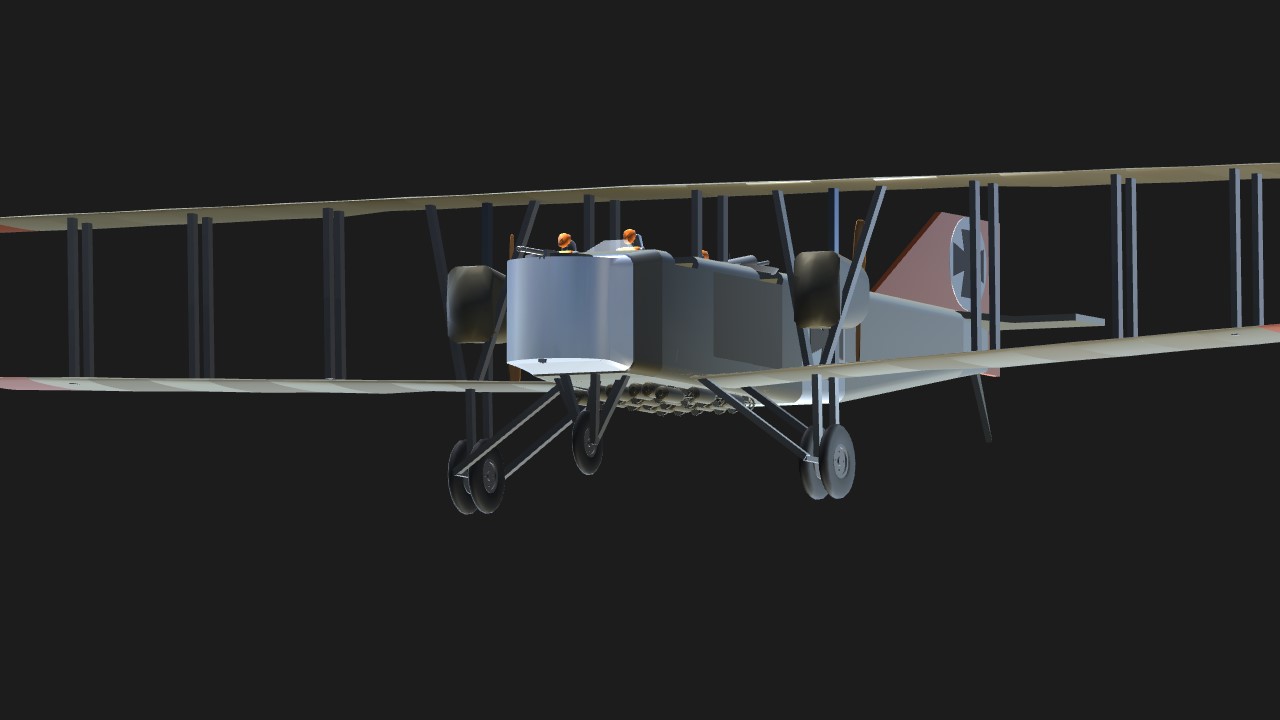

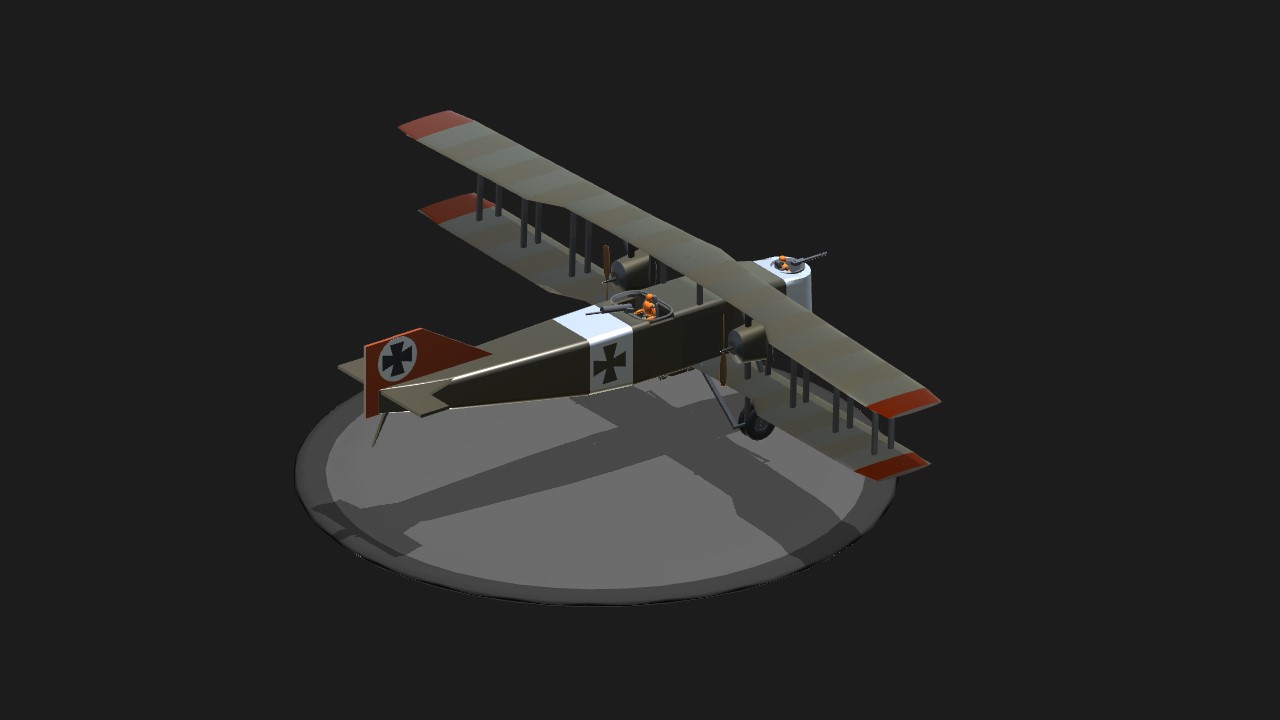
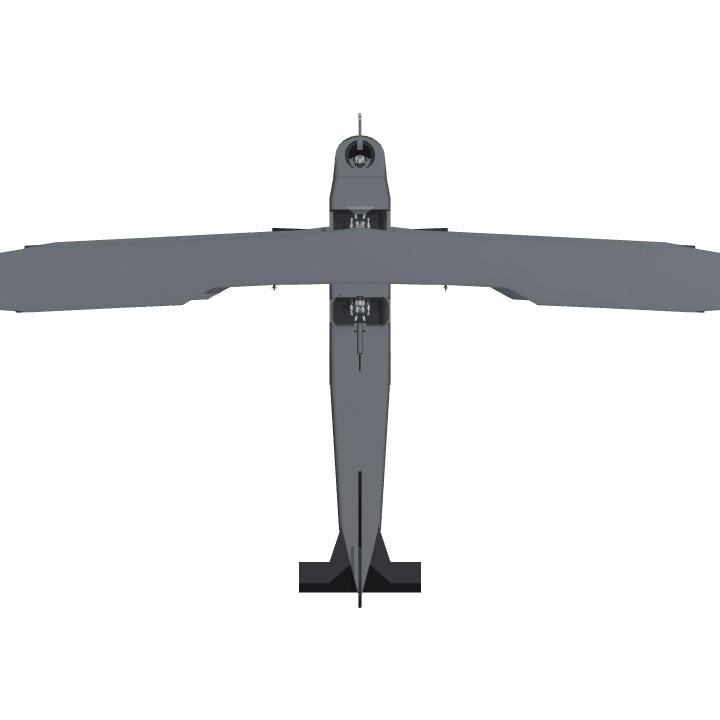
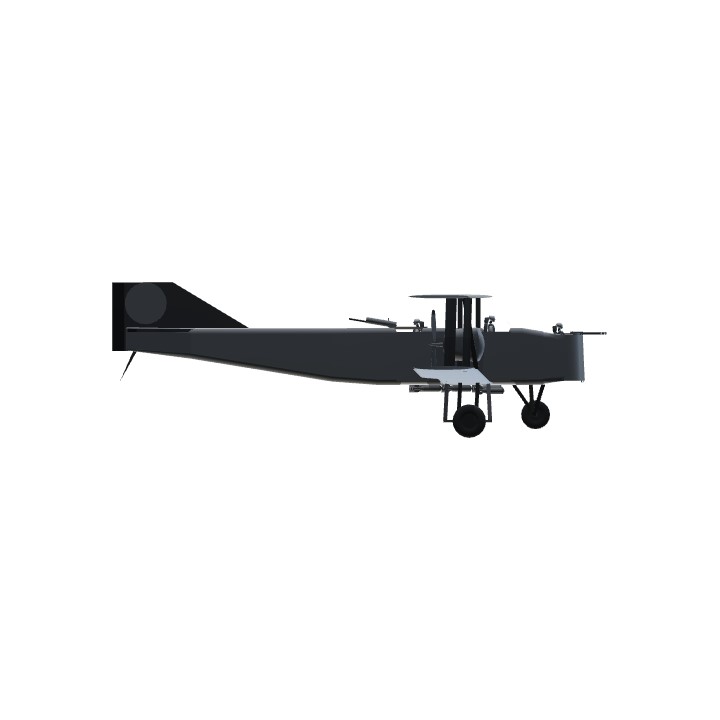
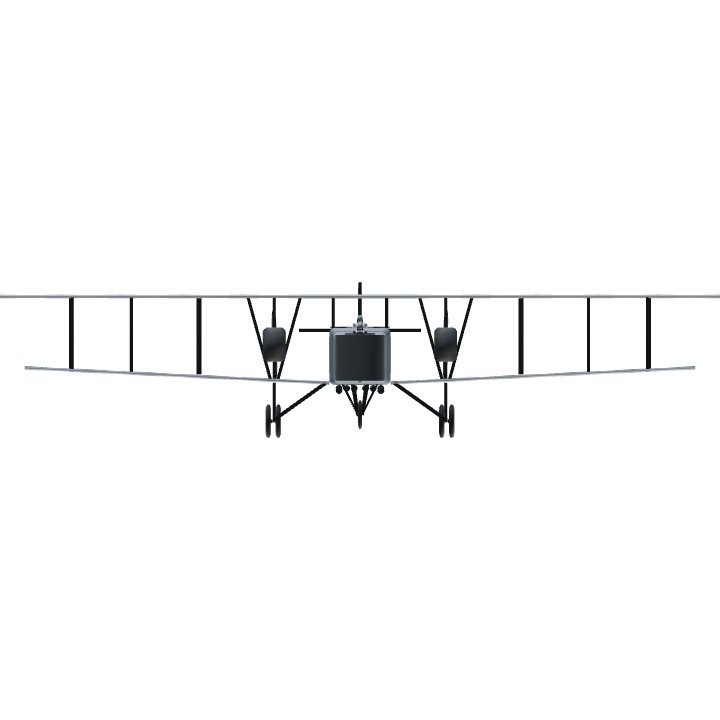
Sounds great! Will try. @MajorSix
@Dragons103 this is great lol I love it
@MajorSix My WWI challenge just ended lol
@Dragons103 Hey mate, if you like making WW1 era planes you might be interested in entering my challenge? Check it out.
https://www.simpleplanes.com/a/JQ9J37/WW1-Fictional-Fighter-Challenge-OPEN-READ-DESCRIPTION
I am working on two more planes for this week. So get prepared for more! @TwistedWarshipDude
Damn, this is amazing